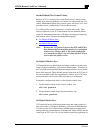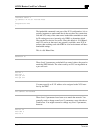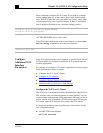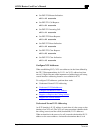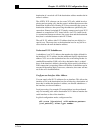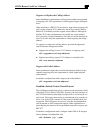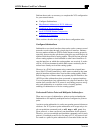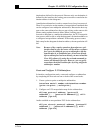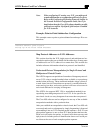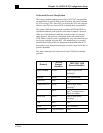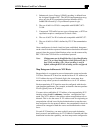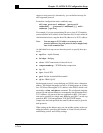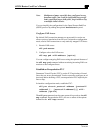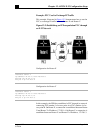
AI2524 Router Card User’s Manual
Page 12-14 August 1997
2524UM
Perform these tasks, as necessary, to complete the X.25 configuration
for your network needs:
z
Configure Subinterfaces
z
Map Protocol Addresses to X.121 Addresses
z
Establish an Encapsulation PVC
z
Set X.25 TCP/IP Header Compression
z
Configure X.25 Bridging
These sections describe how to perform these configuration tasks.
Configure Subinterfaces
Subinterfaces are virtual interfaces that can be used to connect several
networks to each other through a single physical interface. Subinter-
faces are made available on AI2524 routers because routing protocols,
especially those using the split horizon principle, may need help to de-
termine which hosts need a routing update. The split horizon principle
allows routing updates to be distributed to other routed interfaces ex
cept the interface on which the routing update was received. It works
well in a LAN environment in which other routers reached by the in-
terface have already received the routing update.
However, in a WAN environment using connection-oriented inter-
faces (like X.25 and Frame Relay), other routers reached by the same
physical interface might not have received the routing update. Rathe
than forcing you to connect routers by separate physical interfaces, the
AI2524 provides subinterfaces that are treated as separate interfaces.
You can separate hosts into subinterfaces on a physical interface. Sep-
aration does not affect the X.25 protocol, and routing processes recog-
nize each subinterface as a separate source of routing updates,
enabling all subinterfaces to receive routing updates.
Understand Point-to-Point and Multipoint Subinterfaces
There are two types of subinterfaces: point-to-point and multipoint.
Subinterfaces are implicitly multipoint unless configured as point-to-
point.
A point-to-point subinterface is used to encapsulate protocols between
two hosts. An X.25 point-to-point subinterface will accept only a sin-
gle encapsulation command (such as
x25 map
or
x25 pvc
) for a
given protocol, so there can be only one destination for the protocol.
However, you can use multiple encapsulation commands, one for each
protocol, or multiple protocols for one map or PVC. All protocol traf-
fic routed to a point-to-point subinterface is forwarded to the one des-



